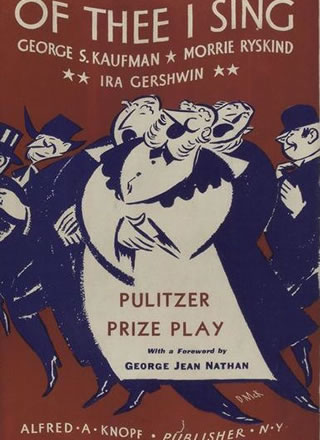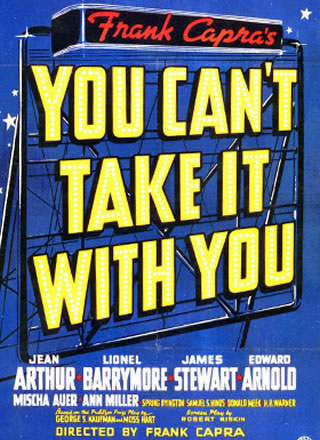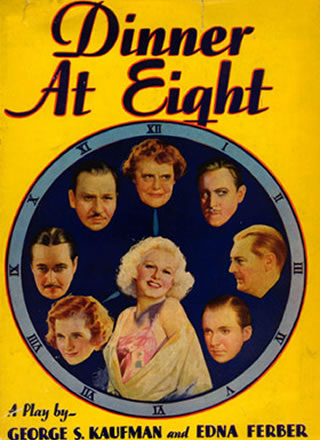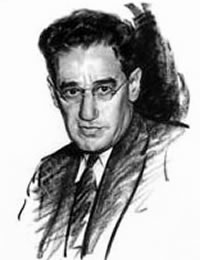Stage Door
(1936)
By Edna Ferber and George S. Kaufman

Cast size: 11 men, 22 women—not much doubling possible.
Two interiors—can be combined into one set.
During the Depression, the Footlights Club in the west Fifties provides an affordable respite and community for the bevy of struggling stage actresses who reside there. They are an amusing and varied lot, offering terrific roles for an ensemble of talented female actors.
For professional performance rights, contact: Concord Theatricals
For amateur performance rights, contact: Dramatists
For rights to a revised version. (for contemporary sensibilities and reduced cast), contact: Dramatists – Revised

Table of Contents
The Plot
 During the Depression, the Footlights Club in the west Fifties provides an affordable respite and community for the bevy of struggling stage actresses who reside there. They are an amusing and varied lot. The main story concerns Terry Randall, a headstrong and witty girl from the Midwest who is determined to become a leading actress on the Great White Way. While pursuing her career, she becomes involved with two completely different beaux: the left-wing arrogant playwright Keith Burgess, who eventually goes Hollywood as a screenwriter, and David Kingsley, a well-groomed elegant film producer who decides to return to Broadway. Among her co-residents at the Footlights Club are Jean Maitland, who lands the Holy Grail—a seven-year film contract; Kaye Hamilton, whose lack of stage success leads to suicide; Pat Devine, a nightclub dancer; and Linda Shaw, a society girl who shocks her mother by having an affair with a wealthy married man. Despite the vicissitudes of the theater trade, Terry sticks to her guns and wins both the leading role in a Broadway play and the affections and respect of the man she loves.
During the Depression, the Footlights Club in the west Fifties provides an affordable respite and community for the bevy of struggling stage actresses who reside there. They are an amusing and varied lot. The main story concerns Terry Randall, a headstrong and witty girl from the Midwest who is determined to become a leading actress on the Great White Way. While pursuing her career, she becomes involved with two completely different beaux: the left-wing arrogant playwright Keith Burgess, who eventually goes Hollywood as a screenwriter, and David Kingsley, a well-groomed elegant film producer who decides to return to Broadway. Among her co-residents at the Footlights Club are Jean Maitland, who lands the Holy Grail—a seven-year film contract; Kaye Hamilton, whose lack of stage success leads to suicide; Pat Devine, a nightclub dancer; and Linda Shaw, a society girl who shocks her mother by having an affair with a wealthy married man. Despite the vicissitudes of the theater trade, Terry sticks to her guns and wins both the leading role in a Broadway play and the affections and respect of the man she loves.
About the Play
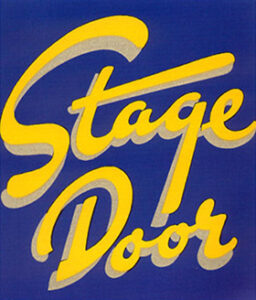 It was Edna Ferber who first conceived of the idea of Stage Door; her niece, Janet Fox, was an aspiring actress who lived at the Rehearsal Club, the obvious model of the residence in the play. For Ferber and Kaufman, the situation offered a tantalizing conceit: telling the stories of two dozen young female characters, flinging themselves around the same central setting, keeping their various stories in the air for more than two hours. As a carnival of characterization, Stage Door is tough to beat; we come to know—and care for—each of the striving female characters in the play.
It was Edna Ferber who first conceived of the idea of Stage Door; her niece, Janet Fox, was an aspiring actress who lived at the Rehearsal Club, the obvious model of the residence in the play. For Ferber and Kaufman, the situation offered a tantalizing conceit: telling the stories of two dozen young female characters, flinging themselves around the same central setting, keeping their various stories in the air for more than two hours. As a carnival of characterization, Stage Door is tough to beat; we come to know—and care for—each of the striving female characters in the play.
Stage Door is also a valentine to the legitimate stage. Hollywood—and the concomitant cheapening of acting talent—comes under consistent attack in the play. Not even Kaufman and Hart’s Once in a Lifetime presents such a negative portrait of the vampire-like seduction of the film industry. Perhaps the most enjoyable characterization in the play is that of Keith Burgess, an arrogant agitprop playwright who sells out his politics for a fat juicy screenwriting contract in Hollywood.
Obviously based on the playwright Clifford Odets, the portrait of Burgess even presages Odets’ difficult struggles with his own conscience in Hollywood. David Kingsley, the play’s tasteful and sophisticated film producer, is also a gentle valentine to MGM producer Irving Thalberg, who had died a month before the play’s premiere, and for whom Kaufman was filled with admiration. In fact, probably no play of the 1930s so perfectly sums up the business of show business on both the East and West Coasts, and is extremely prescient about the ever-present tension between theater and film.
Stage History
Stage Door opened on October 22, 1936 at the Music Box Theatre and ran 169 performances. Ironically, for a show that directed a fair amount of hostility towards Hollywood, the lead was played by a real film star, Margaret Sullavan. Sullavan’s pregnancy late in the run curtailed a successful engagement. Broadway’s loss was Hollywood’s gain, however, when RKO picked up the film rights for a 1937 movie version, starring Katharine Hepburn, Ginger Rogers, and Adolphe Menjou (in a part created for the film).
The movie was so radically altered in its plot by Kaufman collaborator Morrie Ryskind, working with Anthony Veiller, that Kaufman himself quipped that “it should have been retitled Screen Door.” Indeed, the anti-Hollywood bias in the play had been discarded completely, but there are many compensatory charms in the film, almost all of which are in the spirit of the play.
Joining Hepburn were such up-and-coming comediennes as Lucille Ball, Eve Arden, and Ann Miller. The movie, directed by Gregory LaCava received four Academy Award nominations and is also the film where Hepburn, acting badly onstage in Terry Randall‘s Broadway debut, intones her oft-mocked line, “The calla lilies are in bloom again.” Although Stage Door is an ideal play for colleges or community groups with a large female membership, to this date, there has been no Broadway revival.
Other Plays in the Catalogue
In a rare collaboration with his Algonquin Round Table comrade, Alexander Woollcott, Kaufman wrote his only murder mystery.
By George S. Kaufman and Edna Ferber. Cast size: 15 men, 12 women, 7 interiors. Premiered on October 22, 1932 at the Music Box Theatre. It received rave reviews and ran 232 performances.
By Moss Hart and George S. Kaufman. Cast size: 9 men, 7 women, 3 extras (small doubling possible), One set interior. You Can’t Take It With You opened on December 14, 1936 at the Booth Theater and ran 838 performances.
Table of Contents
Contact Us Today
Interested in bringing George S. Kaufman’s timeless plays to your stage?
Please refer to the contact information for each specific play on the various collection pages for direct amateur and professional licensing information.
Plays are represented by Concord Theatricals, Broadway Dramatic Licensing, and Music Theatre International respectively
If you are interested in first-class performance or film/television rights:
In the US, George S. Kaufman’s plays are represented by:
CPK Artists, LLC
In the UK, George S. Kaufman’s plays are represented by:
Alan Brodie Representation
For more information about George S. Kaufman or this website, contact:
Laurence Maslon
Literary Trustee, George S. Kaufman Estate

